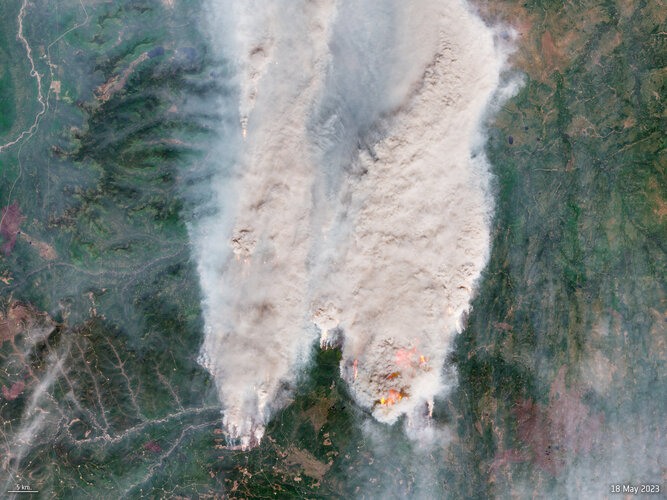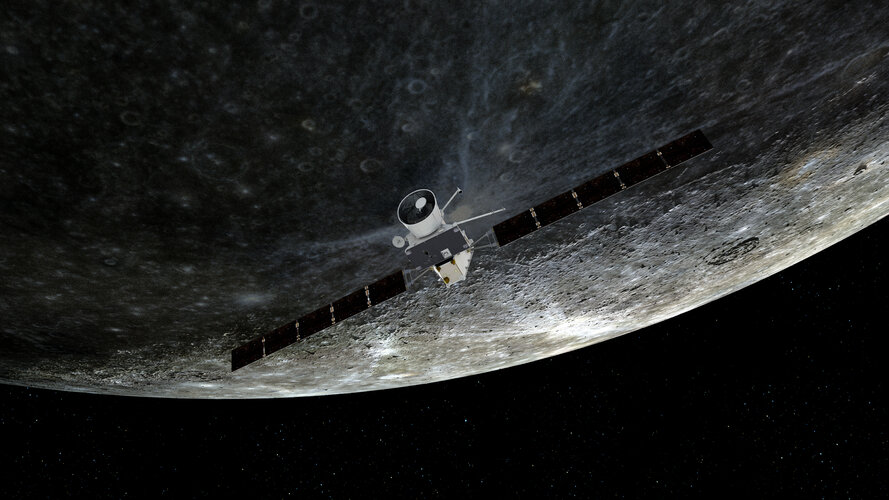
Copernical Team
Unlocking early Earth chemistry
 Billions of years ago, Earth was an extremely hostile planet with active volcanoes, a harsh atmosphere, and certainly no life! This prebiotic Earth, however, was filled with a wide array of abiotic organic molecules derived from its early environment, which underwent chemical reactions that eventually led to the origin of life. A class of such abiotic molecules abundant during the prebiotic era
Billions of years ago, Earth was an extremely hostile planet with active volcanoes, a harsh atmosphere, and certainly no life! This prebiotic Earth, however, was filled with a wide array of abiotic organic molecules derived from its early environment, which underwent chemical reactions that eventually led to the origin of life. A class of such abiotic molecules abundant during the prebiotic era ExLabs awarded Space Force contract for robotic capture system
 Exploration Laboratories, ExLabs announces it has been selected by SpaceWERX for a Direct-to-Phase II SBIR contract in the amount of $1.7M, focused on Autonomous Capture and Acquisition to investigate its potential to fill capability gaps in the Department of the Air Force (DAF).
The Air Force Research Laboratory and SpaceWERX have partnered to streamline the Small Business Innovation Rese
Exploration Laboratories, ExLabs announces it has been selected by SpaceWERX for a Direct-to-Phase II SBIR contract in the amount of $1.7M, focused on Autonomous Capture and Acquisition to investigate its potential to fill capability gaps in the Department of the Air Force (DAF).
The Air Force Research Laboratory and SpaceWERX have partnered to streamline the Small Business Innovation Rese Forecasting fires with SMOS

As the current wildfires in Canada show, climate change is increasing the risk and extent of wildfires across the globe. ESA, along with the European Centre for Medium-Range Weather Forecasts have taken a new approach by using realtime observations from ESA’s Soil Moisture and Ocean Salinity satellite mission to better anticipate the outbreak of fires.
BepiColombo braces for third Mercury flyby

The ESA/JAXA BepiColombo mission is gearing up for its next close flyby of Mercury on 19 June, when it will pass the planet’s surface at an altitude of about 236 km.
Ariane 5 flight VA261: follow the launch

Europe’s Ariane 5 rocket is being prepared for its final flight. You can follow the launch live on ESA Web TV. Flight VA261 will lift off as soon as 16 June at 23:26 CEST, pending suitable conditions for launch.
Broadcast begins 22:55 CEST/21:55 BST on ESA Web TV
Liftoff scheduled for 23:26 CEST/22:26 BST/21:26 UTC/18:26 Kourou
Discharge test for launcher antenna
 Image:
Discharge test for launcher antenna
Image:
Discharge test for launcher antenna Satellogic earth observation constellation continues expansion with SpaceX Transporter-8 Mission
 Satellogic Inc. (NASDAQ: SATL), reports that four NewSats Mark-V spacecraft successfully reached low-Earth orbit following a SpaceX Falcon 9 launch on June 12th from Vandenberg Space Force Base in California. This marks Satellogic's 15th mission and its first payload comprised exclusively of its latest generation spacecraft with advanced Earth Observation ("EO") capabilities.
Each spacecra
Satellogic Inc. (NASDAQ: SATL), reports that four NewSats Mark-V spacecraft successfully reached low-Earth orbit following a SpaceX Falcon 9 launch on June 12th from Vandenberg Space Force Base in California. This marks Satellogic's 15th mission and its first payload comprised exclusively of its latest generation spacecraft with advanced Earth Observation ("EO") capabilities.
Each spacecra D-Orbit launches 11th orbital transportation mission in years
 Space logistics and orbital transportation company D-Orbit launched "Above the Sky", the 11 th commercial mission of their proprietary orbital transfer vehicle (OTV) ION Satellite Carrier (ION). The OTV lifted off on June 12 th , 2023, at 2:19 p.m. PT (21:19 UTC) aboard a Falcon 9 rocket from the Space Launch Complex 4 East (SLC-4E) at Vandenberg Space Force Base in California, and was successfu
Space logistics and orbital transportation company D-Orbit launched "Above the Sky", the 11 th commercial mission of their proprietary orbital transfer vehicle (OTV) ION Satellite Carrier (ION). The OTV lifted off on June 12 th , 2023, at 2:19 p.m. PT (21:19 UTC) aboard a Falcon 9 rocket from the Space Launch Complex 4 East (SLC-4E) at Vandenberg Space Force Base in California, and was successfu SpaceX Transporter-8 delivers 6 NanoAvionics satellites to orbit
 Kongsberg NanoAvionics recently announced a significant accomplishment in the field of space technology as SpaceX's Transporter-8 mission successfully placed six of its satellites into orbit. Among these, the Tiger-4 stands out, given its key role in bolstering the 5G Narrowband-IoT constellation in low Earth orbit (LEO). This constellation, overseen by telecoms operator OQ Technology, has expan
Kongsberg NanoAvionics recently announced a significant accomplishment in the field of space technology as SpaceX's Transporter-8 mission successfully placed six of its satellites into orbit. Among these, the Tiger-4 stands out, given its key role in bolstering the 5G Narrowband-IoT constellation in low Earth orbit (LEO). This constellation, overseen by telecoms operator OQ Technology, has expan NASA laser communications terminal delivered for Artemis II lunar mission
 The laser communications system for NASA's Artemis II mission arrived at NASA's Kennedy Space Center in Florida for integration with the Orion spacecraft, which will carry astronauts around the Moon for the first time since the Apollo missions.
On November 16, 2022, NASA launched the Artemis I mission, an uncrewed flight test that took the human-rated Orion spacecraft farther into space th
The laser communications system for NASA's Artemis II mission arrived at NASA's Kennedy Space Center in Florida for integration with the Orion spacecraft, which will carry astronauts around the Moon for the first time since the Apollo missions.
On November 16, 2022, NASA launched the Artemis I mission, an uncrewed flight test that took the human-rated Orion spacecraft farther into space th 